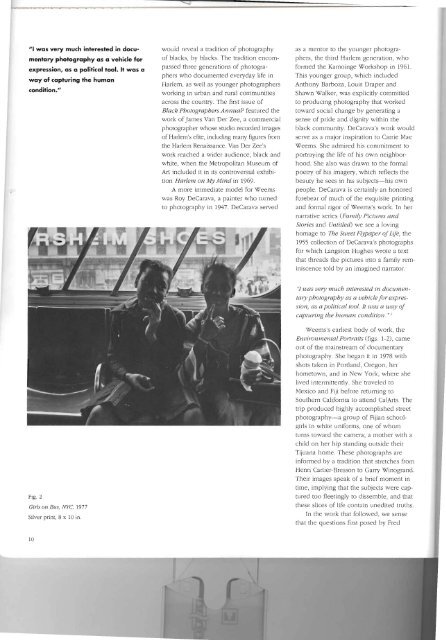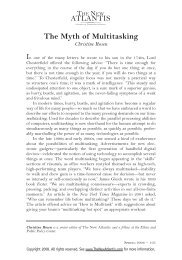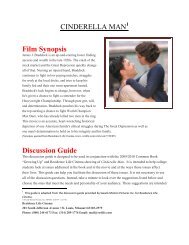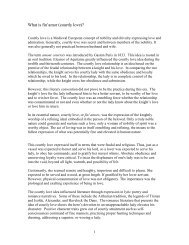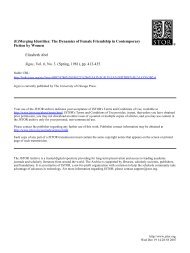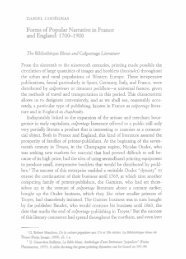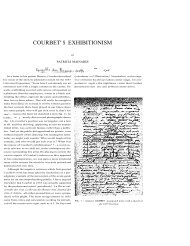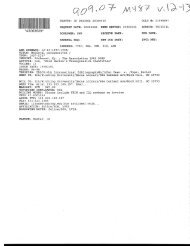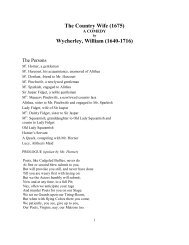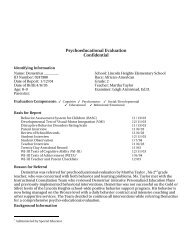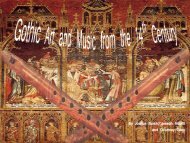CARRIE MAE WEEMS - People Search Directory
CARRIE MAE WEEMS - People Search Directory
CARRIE MAE WEEMS - People Search Directory
You also want an ePaper? Increase the reach of your titles
YUMPU automatically turns print PDFs into web optimized ePapers that Google loves.
"I was very much interested in documentary<br />
photography as a vehicle for<br />
expression, as a political tool. It was a<br />
way of capturing the human<br />
condition."<br />
would reveal a tradition of photography<br />
of blacks, by blacks. The tradition encompassed<br />
three generations of photographers<br />
who documented everyday life in<br />
Harlem, as well as younger photographers<br />
working in urban and rural communities<br />
across the country. The first issue of<br />
Black Photographers Annual' featured the<br />
work ofJames Van Der Zee, a commercial<br />
photographer whose studio recorded images<br />
of Harlem's elite, including many figures from<br />
the Harlem Renaissance. Van Der Zee's<br />
work reached a wider audience, black and<br />
white, when the Metropolitan Museum of<br />
Art included it in its controversial exhibition<br />
Harlem on My jJ;[ind in 1969.<br />
A more immediate model for Weems<br />
was Roy DeCarava, a painter who turned<br />
to photography in 1947. DeCarava served<br />
as a mentor to the younger photographers,<br />
the third Harlem generation, who<br />
formed the Kamoinge Workshop in 1961.<br />
This younger group, which included<br />
Anthony Barboza, Louis Draper and<br />
Shawn Walker, was explicitly committed<br />
to producing photography that worked<br />
toward social change by generating a<br />
sense of pride and dignity within the<br />
black community. DeCarava's work would<br />
serve as a major inspiration to Carrie Mae<br />
Weems. She admired his commitment to<br />
portraying the life of his own neighborhood.<br />
She also was drawn to the formal<br />
poetry of his imagery, which reflects the<br />
beauty he sees in his subjects-his own<br />
people. DeCarava is certainly an honored<br />
forebear of much of the exquisite printing<br />
and formal rigor of Weems's work. In her<br />
narrative series (Fami(y Pictures and<br />
Stories and Untitled) we see a lOVing<br />
homage to The Sweet Flypaper ofLife, the<br />
1955 collection of DeCarava's photographs<br />
for which Langston Hughes wrote a text<br />
that threads the pictures into a family reminiscence<br />
told by an imagined narrator.<br />
Fig 2<br />
Girls on Bus, NYC, 1977<br />
Silver print, 8 x 10 in.<br />
''] was very much interested in documentmy<br />
photography as a vehicle for expression,<br />
as a political tool. It was a way of<br />
capturing the human condition. ",'<br />
Weems's earliest body of work, the<br />
Environmental Portraits (figs 1-2), came<br />
out of the mainstream of documentary<br />
photography She began it in 1978 with<br />
shots taken in Portland, Oregon, her<br />
hometown, and in New York, where she<br />
lived intermittently. She traveled to<br />
IVlexico and Fiji before returning to<br />
Southern California to attend CalArts The<br />
trip produced highly accomplished street<br />
photography-a group of Fijian schoolgirls<br />
in white uniforms, one of whom<br />
turns toward the camera; a mother with a<br />
child on her hip standing outside their<br />
Tijuana home. These photographs are<br />
informed by a tradition that stretches from<br />
Henri Cartier-Bresson to Garry Winogrand.<br />
Their images speak of a brief moment in<br />
time, implying that the subjects were captured<br />
too fleetingly to dissemble, and that<br />
these slices of life contain unedited truths.<br />
In the work that followed, we sense<br />
that the questions first posed by Fred<br />
10


